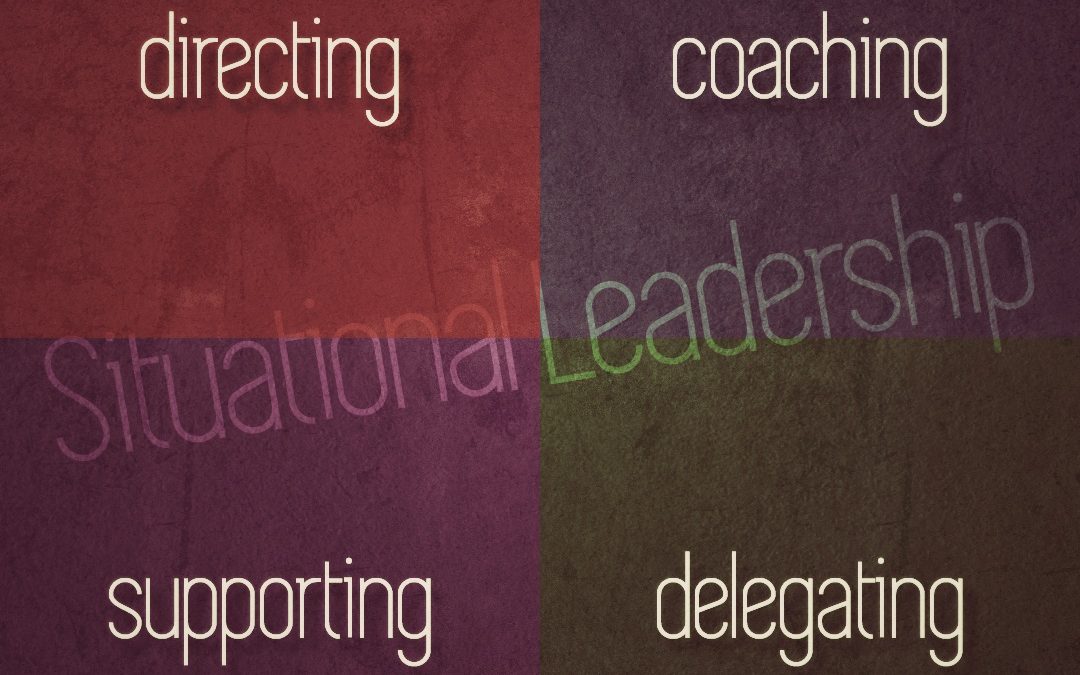Paul Hersey and Ken Blanchard introduced the concept of “situational leadership” to explain how effective leaders adjust to match the uniqueness of their followers. It boils down to four strategies.
-
Directing is for employees requiring a lot of specific guidance to complete the task. The leader might say, “Chris, here’s what I’d like you to do, step by step. And here’s when I need it done.” It’s primarily a one-way conversation, with little input from the employee.
-
Coaching is for employees who need more than average guidance to complete the task, but with above-average amounts of two-way dialogue. Coaching is for people who both want and need to learn. The leader might say, “Chris, here’s what I’d like you to do,” and then ask for input: “What do you think, Chris?”
-
Supporting is for employees with the skills to complete the task but who may lack the confidence to do it on their own. This style features below-average amounts of direction. The leader might say, “Chris, here’s the task. How do you think it should be done? Let’s talk about it. How can I help you on this one?”
-
Delegating is for employees who score high on motivation, ability, and confidence. They know what to do, how to do it, and can do it on their own. The leader might say, “Chris, here’s the assignment. You have a great track record. If I can help, just ask. If not, you’re on your own.”
From: Marshall Goldsmith. “Triggers: Creating Behavior That Lasts–Becoming the Person You Want to Be”
In Triggers, Marshall Goldsmith suggests using the four situational leadership strategies on ourselves in order to change behavior. He writes, “we start each day as a bifurcated individual, one part leader, the other part follower—and as the day progresses, the two grow further apart.”
We wake up with a focused determination to take on our day and life with purpose, but as we begin to deal with situations and people, our agenda shifts to being more responsive than assertive.
At Big Life, Inc., we constantly remind ourselves, “Life can happen to us or we can happen to life.” Are we going to lead or are we going to follow when our environment shifts our focus?
It depends on the task
Some tasks don’t require much creativity or thought. As soon as I finish writing this, I’m going to go in the kitchen and empty the dishwasher. For that task, Directing is the best approach. I open the door, pile various kitchen things near the cabinets they go in, put them in those cabinets, and then close the dishwasher.
Later, I have a goal to hide the wire from my router to the router connected to the modem. I know basically what needs to be done, but not nearly as well as the man who set up the WiFi in the house. I could get it done on my own, but not nearly as quickly or as easily as if I employ the Coaching strategy to the task. If we have a back and forth conversation and work together, we’ll get the task done much faster.
A task on my TO DO list that will get done best using a Supporting strategy is building an application we use to share information internally here at Big Life. It needs to work the way we work best, and the only way to get it right is by getting guidance from my business partner about what works for him and what doesn’t.
A fourth task I have to get done is editing episodes of The Big Life Show. I don’t need any input to get that done. It’s a creative project and I have full reign to edit and master the audio so that I’m happy with the final product. Then I publish. That’s a Delegating responsibility.
This strategy is new to me, so I don’t know if it will stick and result in me getting things done more effectively and efficiently, but the strategy makes enough sense to me that I’ll try it and see how it works!




